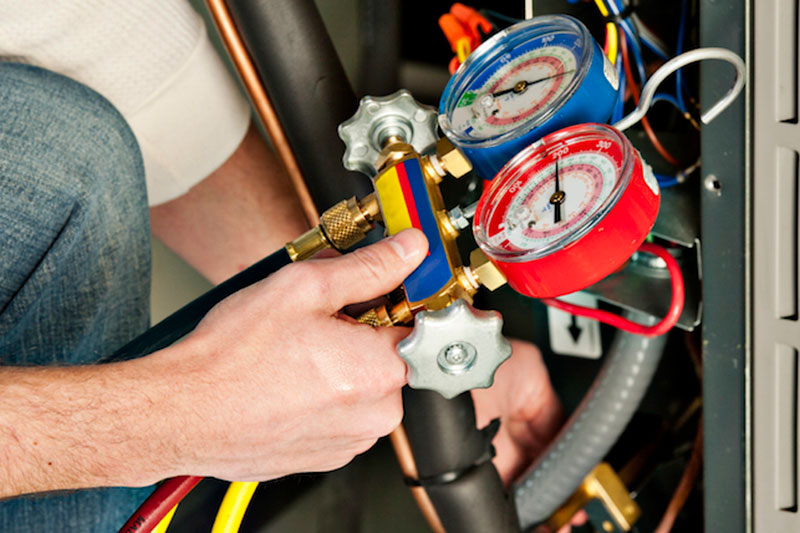
You might not think a lot about how your air conditioner functions, but it requires refrigerant to keep your home fresh. This refrigerant is controlled by environmental rules, because of the chemicals it contains.
Subject to when your air conditioner was added to your home, it may need R-22, R-410A or R-32 refrigerant. We’ll go over the differences and which air conditioner refrigerants are being phased out in Hodgenville, plus how these phaseouts affect you.
What’s R-22 and Why Is It No Longer Being Made?
If your air conditioner was installed before 2010, it possibly has Freon®. You can learn if your air conditioner has it by contacting us at 270-358-3167. You can also examine the name plate on your air conditioner condenser, which is found outside your residence. This sticker will include info on what type of refrigerant your AC has.
Freon, which is also called R-22, includes chlorine. Scientists consider this chemical to be harmful to the earth’s ozone layer and one that contributes to global warming. The Environmental Protection Agency, which manages refrigerants in the United States, banned its creation and import in January 2020.
I Have a R-22 Air Conditioner. Should I Replace It?
It depends. If your air conditioning is operating as designed, you can continue to use it. With routine air conditioner maintenance, you can expect your system to last around 15–20 years. However, the Department of Energy says that substituting a 10-year-old air conditioner could save you 20–40% on summertime cooling costs!
If you don’t get a new air conditioner, it may lead to a problem if you require air conditioning repair in the future, specifically for refrigerant. Repairs can be higher-priced, because only small amounts of recycled and reclaimed R-22 is accessible.
With the phaseout of R-22, most new air conditioners now have Puron®. Also referred to as R-410A, this refrigerant was made to keep the ozone layer strong. Since it requires a varying pressure level, it isn’t compatible with air conditioners that need R-22 for cooling.
However, Puron still has the potential to create global warming. As a result, it might also ultimately be phased out. Although it hasn’t been mandated yet for residential air conditioners, it’s anticipated sometime this decade.
What Refrigerant Will Take the Place of R-410A?
In preparation of the end, some brands have initiated using R-32 in new air conditioners. This refrigerant ranks low for global warming potential—approximately one-third less than R-410A. And it also decreases energy expenditure by around 10%, according to the Intergovernmental Panel on Climate Change’s Fourth Assessment Report. That’s savings that could be sent on to you through your cooling expenses.
Phelps Heating & Cooling, Inc. Can Provide Support with All Your Air Conditioning Needs
In summary, the modifications to air conditioner refrigerant probably won’t affect you very much until you need repairs. But as we discussed previously, repairs connected to refrigerant can be more costly due to the low levels that are accessible.
Aside from that, your air conditioner frequently malfunctions at the worst time, frequently on the hottest day when we’re receiving a lot of other calls for AC repair.
If your air conditioner relies on a discontinued refrigerant or is more than 15 years old, we recommend getting a new, energy-efficient air conditioner. This delivers a stress-free summer and might even lower your electrical costs, especially if you choose an ENERGY STAR®-rated air conditioner. Plus, Phelps Heating & Cooling, Inc. offers many financing options to make your new air conditioner work with your budget. Contact us at 270-358-3167 to start now with a free estimate.



